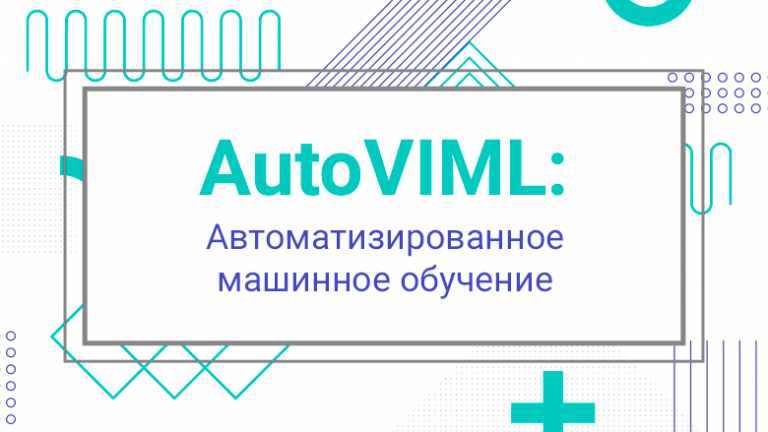What is Retrieval-Augmented Generation (RAG) in language models and how does it work?
In the context of discussions about large language models (LLM), the abbreviation RAG – Retrieval-Augmented Generation, or if translated into Russian, “search augmented generation” – increasingly appears. In this text, we will try to understand in general terms how RAG works and where it can be applied to practical tasks.
Disclaimer: this is a free translation post from the Medium portal, written by Sahin Ahmed. Translation prepared by the editorial staff of “Technocracy”. To stay up to date with new material, subscribe to “Voice of Technocracy” — we regularly talk about news about AI, LLM and RAG, and also share useful mustreads and current events.
To discuss the pilot or ask a question about LLM, please Here.
In the rapidly evolving world of artificial intelligence, language models have evolved significantly. From the first simple rule-based systems to modern neural networks, each step has significantly expanded AI’s capabilities in working with language. One of the key innovations along the way was the emergence of Retrieval-Augmented Generation, or RAG.
RAG combines traditional language models with an innovative approach: it directly integrates information retrieval into the generation process. Imagine an AI that can “look into” a library of texts before answering a question, making it more knowledgeable and contextually accurate. This capability doesn’t just improve the model; it’s a game-changer. Language models can now generate answers that are not only accurate, but also deeply informed by relevant real-world information.
What is Retrieval-Augmented Generation (RAG)?
Traditional language models generate responses based solely on patterns and information learned during training. However, such models are limited by the data they were trained on, which often results in shallow responses or insufficient depth of knowledge.
RAG solves this problem by incorporating external data as needed during the response generation process. Here’s how it works: When a query comes in, the RAG system first extracts relevant information from a large data set or knowledge base, and then uses that information to generate a more informed and accurate response.
RAG architecture
RAG is a complex system designed to extend the capabilities of large language models by integrating powerful information retrieval mechanisms. It is essentially a two-stage process involving a retriever and a generator. Let's take a closer look at the role of each component in the overall operation of the system:

1. Retriever component — is responsible for finding and extracting the most relevant information from external sources. It analyzes the request and finds pieces of data that may be useful for an accurate answer.
2. Generator component — uses the information found to generate a response. Unlike traditional models that rely only on pre-trained knowledge, this component can incorporate current and relevant data, improving the quality of the response. In essence, the generation component is a large language model.
Retriever component:
The job of the search component is to find relevant documents or pieces of information that will help answer a query. It takes an input query and searches the database, extracting information that may be useful in forming an answer.
Types of search engines:
1. Dense Retrievers: These systems use neural network-based methods to create dense vector representations of text. They are highly effective in cases where the meaning of the text is more important than exact word matches, as such representations capture semantic similarities.
2. Sparse Retrievers: These systems are based on term matching methods such as TF-IDF or BM25. They are excellent at finding documents that contain exact keyword matches, which is especially useful when the query contains unique or rare terms.
Generator component:
The generator is a language model that creates the final text response. It takes the input query and the context provided by the search component to generate a coherent and relevant response.
Retrieval-Augmented Generation (RAG) workflows step by step

1. Request processing: It all starts with a request. This can be a question, a prompt, or any other form of input that the language model needs to respond to.
2. Vectorization model: The query is passed to the vectorization model, which transforms it into a vector – a numerical representation that the system can process and analyze.
3. Search in vector database: The query vector is used to search a vector database. This database contains pre-computed vectors of potential contexts that the model can use to generate a response. The system retrieves the most relevant contexts based on how close their vectors are to the query vector.
4. Adding context: The initial query is supplemented with context from the vector database, and together they are fed into the Large Language Model (LLM). This query contains information that is used by the model to form a more accurate answer.
5. Generate LLM response: LLM takes into account both the original query and additional context to create a complete and relevant answer. It synthesizes information from the context so that the answer is based not only on pre-trained knowledge, but also complemented by specific details obtained from the extracted data.
6. Final answer: Ultimately, LLM outputs an answer that is now augmented with external data, making it more accurate and detailed.
The choice of search engine type depends on the nature of the database and the types of queries expected. Dense Retrievers are more resource-intensive but are able to capture deep semantic relationships, while Sparse Retrievers are faster and better at exact term matches.
Some RAG systems use hybrid search engines that combine dense and sparse techniques to balance trade-offs and take advantage of the benefits of both approaches.
Application of RAG
1. Improving the efficiency of chatbots and conversational agents:
Customer support: Chatbots with RAG can retrieve product information, FAQs, and support documents to provide accurate and detailed answers to customer queries.
Virtual assistants: Personal assistants use RAG to retrieve real-time data such as weather or news, making interactions more relevant and useful.
2. Increasing the accuracy and depth of automatic content generation:
Content creation: AI journalism tools use RAG to find relevant facts and figures, creating articles that are rich in relevant information and require minimal manual editing.
Copywriting: Marketing agents use RAG to create product descriptions and advertising copy that is not only creative but also accurate, based on a database of product features and reviews.
3. Application in question-answer systems:
Educational platforms: RAG is used in Ed-tech to provide detailed explanations and add context to complex topics by extracting information from educational databases.
Scientific research: AI systems help researchers find answers to scientific questions by accessing vast amounts of academic articles and generating summaries of relevant research.
Benefits of Using RAG in Different Areas
Medicine: RAG-enabled systems can help doctors extract information from medical journals and patient records, suggesting diagnoses or suggesting treatments based on the latest research.
Customer support: By extracting data about company policies and customer interaction history, RAG enables AI agents to offer personalized and accurate recommendations, increasing customer satisfaction.
Education: Educators can use RAG-based tools to create customized curriculum and materials, drawing from a wide range of educational sources.
Additional Applications
Legal assistance: RAG can assist with legal tasks by extracting relevant information from laws and case law to prepare legal documents or materials for court cases.
Translation services: Combining RAG with translation models enables the creation of translations that take into account cultural nuances and idiomatic expressions based on bilingual text corpora.
Using RAG in such tasks allows generating not just answers based on a static knowledge base, but results dynamically enriched with relevant information, which makes AI-generated content more accurate, informative and reliable.
RAG Implementation Challenges
Complexity: Combining search and generation processes complicates the model architecture, making it difficult to develop and maintain.
Scalability: Efficient management and searching of large databases is difficult, especially as the volume of documents increases.
Delays: The search process can introduce delays that affect system response time, which is especially important for applications with real-time requirements such as conversational agents.
Synchronization: Updating the search database requires a synchronization mechanism that can handle constant updates without degrading performance.
Limitations of Current RAG Models
Context restrictions: RAG models can struggle when the context needed to respond exceeds the size of the model's input window due to token limitation.
Extraction errors: The quality of the generated answer is highly dependent on the quality of the search stage; if irrelevant information is extracted, it will worsen the result.
Bias: RAG models may unintentionally amplify biases present in the data sources they extract.
RAG growth points as a technology
Improved integration: More coherent interaction between the search and generation components can improve the model's ability to handle more complex queries.
Improved search algorithms: More sophisticated search algorithms can provide more accurate and relevant context, improving the overall quality of the generated content.
Adaptive learning: Implementing mechanisms that allow the model to learn from its search successes and errors can improve the system over time.
What to look for when preparing content for RAG
Data quality: The effectiveness of the RAG system directly depends on the quality of the data in the search base. Bad or outdated data can lead to incorrect results.
Reliability of sources: It is important to ensure that information sources are reliable and authoritative, especially in applications such as healthcare and education.
Privacy and Security: When dealing with sensitive data such as personal information and confidential content, many questions arise regarding data security.
New trends and current research
Cross-modal search: Expanding RAG's capabilities to search not only text information, but also data from other modalities such as images and video, enabling more meaningful multimodal responses.
Continuous learning: Designing RAG systems that learn from every interaction, improving their search and generation capabilities over time without the need for retraining.
Interactive search: Improve the search process to be more interactive, allowing the generator to ask for additional information or clarification, just like a human would in a conversation.
Domain adaptation: Customize RAG models for specific domains, such as legal or medical, to improve the relevance and accuracy of information extraction.
How can technology be improved in the future?
Personalization: Integrate user profiles and interaction histories to personalize responses, making RAG models more effective in customer support and recommendation systems.
Justification of knowledge: Using external knowledge bases not only for searching, but also to substantiate answers with verified facts, which is especially important for educational and information applications.
Effective indexing: Using more efficient data structures and algorithms to index the database to speed up searches and reduce computational costs.
![[Личный опыт] How it works for a QA engineer in Finland: what’s wrong with the schedule, corporate culture and bonuses](https://prog.world/wp-content/uploads/2021/05/u1q6pxrhhb82yomtdtzsvwbz0ik-768x480.jpeg)


